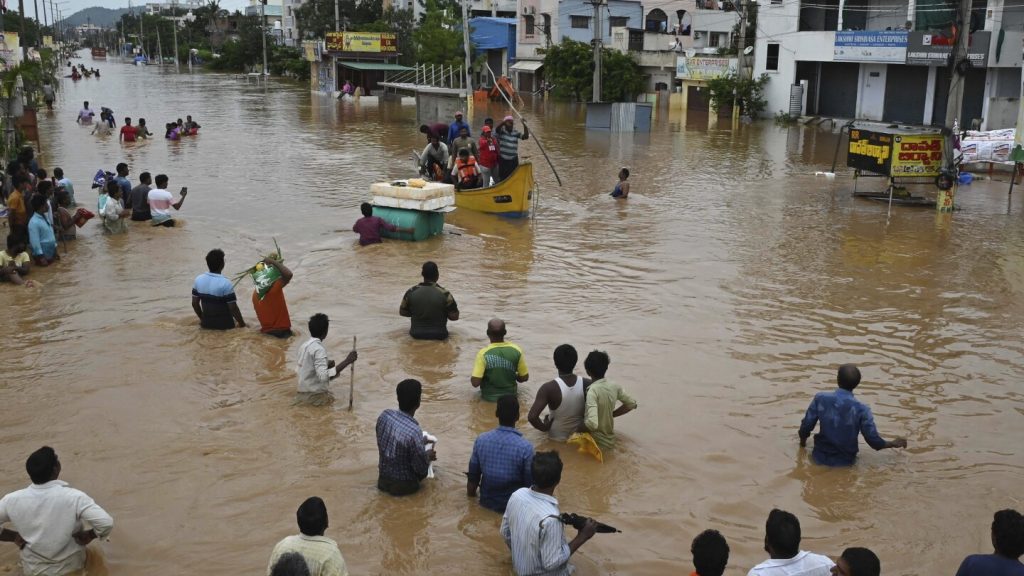Heavy monsoon rains and floods have caused devastation in southern India and Pakistan, with at least 33 people confirmed dead in India and five children in Pakistan. In India’s Andhra Pradesh and Telangana states, houses have collapsed, roads and rail traffic disrupted, and thousands of people have been moved to relief camps due to overflowing lakes and streams. The Budameru River in Vijayawada, the commercial capital of Andhra Pradesh, has flooded 40% of the city, leaving nearly 275,000 people stranded in residential areas. Disaster relief teams are working to transport stranded families to safer areas, as the situation remains critical.
In India’s six northeastern states, at least 170 people have died since June due to floods and mudslides caused by heavy rains. In neighboring Pakistan, flash floods triggered by monsoon rains have killed five children in Balochistan province, adding to the country’s overall death toll of at least 300 since July 1. The floods in Balochistan have claimed the lives of 32 people, including 18 children and 12 women, over the past two months. Dozens of villages have been inundated, highways blocked, and nearly 20,000 homes damaged across the country, with Balochistan being the hardest hit region.
Landslides and floods are a common occurrence during the monsoon season in both India and Pakistan, with scientists and weather forecasters attributing the heavier rains in recent years to climate change. In 2022, Pakistan saw one-third of its territory inundated by climate-induced downpours, resulting in the deaths of 1,739 people and causing $30 billion in damage. Authorities in both countries are grappling with the aftermath of the devastating floods, as residents struggle to cope with the loss of life and property. As the weather service issues red alerts for additional districts, the focus remains on providing aid and assistance to those affected by the natural disasters.
The challenging conditions brought on by the heavy monsoon rains have made it difficult for relief teams to reach those in need, leading to further challenges in providing assistance to affected communities. Authorities in both India and Pakistan are urging residents to exercise caution and take necessary precautions to ensure their safety during this period of heightened risk. With more rains predicted in the coming days, it is essential for residents in flood-prone areas to remain vigilant and follow instructions from local authorities to minimize the impact of the ongoing natural disasters.
The impact of the floods on communities in both India and Pakistan highlights the urgent need for improved disaster preparedness and response mechanisms to mitigate the effects of extreme weather events. Climate change continues to exacerbate the frequency and intensity of monsoon rains, posing a significant threat to vulnerable populations in the region. As the governments of both countries work to address the immediate needs of those affected by the floods, there is a growing recognition of the importance of long-term measures to build resilience and adapt to the changing climate. The collaborative efforts of governments, humanitarian organizations, and communities will be crucial in shaping a more sustainable future for those at risk from the impacts of climate change.


